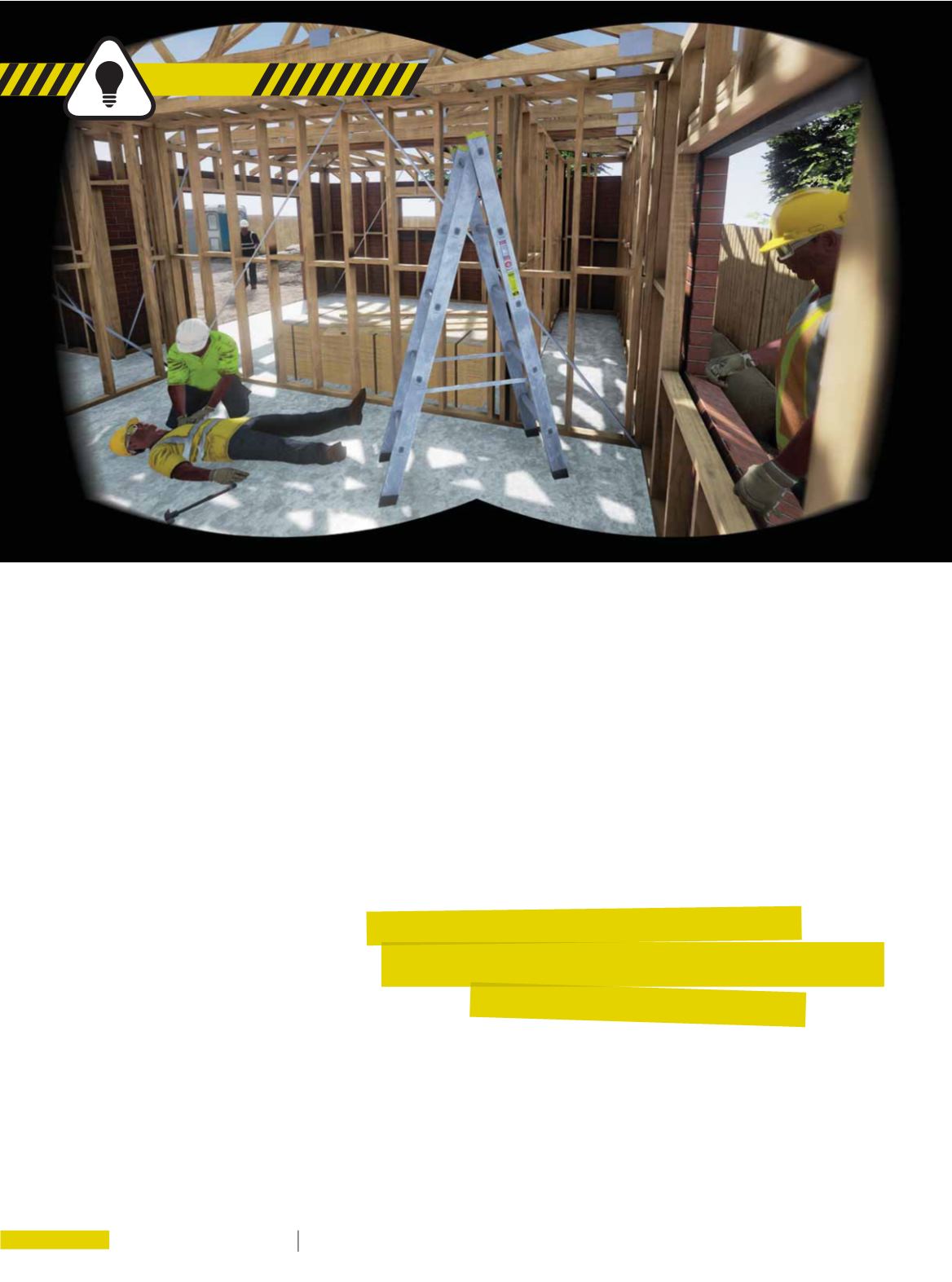

8 8
P L UMB I N G CO N N E C T I O N
S UMM E R 2 0 16
I
f you asked an average building
contractor what white cards and
virtual reality (VR) have in common,
you’d likely get some pretty weird looks.
But this may all be about to change as
the technology makes its presence felt in
an increasing number of applications.
The Situation Engine is an
innovation that uses immersive virtual
environments to deliver practical
learning experiences to individuals
and groups. It was the brain-child of
Professor Sidney Newton and Russell
Lowe from the built environment
faculty at The University of New South
Wales (UNSW).
“It was originally developed to
help students better understand
construction technology but we
could also see a strong opportunity
for teaching health and safety on
construction sites. So we formed a
company to consult and develop the
system technologies for white card
induction along with a whole range
of different health and safety training
applications in industry,” Sidney says.
Because the user’s experience is
extremely realistic, the Situation Engine
makes it possible to exploit the known
benefits of situational learning (learning
by ‘doing’ as opposed to conveying
knowledge and facts) without having to
physically go on site.
Instead of being given a specific
problem to solve or project to complete,
students are placed in a ‘situation’
where problems arise organically
through engagement with the program.
In this way there is no pre-defined start
or finish point.
The Situation Engine uses a particular
kind of ‘first-person shooter’ (FPS) video
game engine. This renders moving,
photo-realistic scenes in real-time 3D
that are accompanied by surround-
sound and tactile feedback for the user.
When engaged in a ‘situation’, the user
is represented as an avatar that is able
to move around in the virtual space (a
simulation of a construction site for
example) and interact with the objects
and other users within that space.
When it comes to health and safety
training, the goal of trainers is to
change people’s behaviour and
practices as opposed to just teaching
technical information – this is where
A VIRTUAL REALITY CHECK
As new technologies come to
play an increasingly large role in
the construction industry,
Jacob
Harris
discovers how virtual
reality can be used to improve
competency training.
“If you see an accident on site,
you remember it and change your
behaviour accordingly.”
















